What is Erythema Nodosum ?
It is a form of inflammatory disorder which is typified by the presence of tender and painful reddish lumps underneath the skin. Erythema Nodosum could be triggered by drug reactions, systemic diseases or infections. However, most cases of EN occur spontaneously. People suffering from this form of skin disorder notice 1 to 5 cm tender lumps underneath the skin, especially on the lower legs.
Treatment for Erythema Nodosum is aimed towards curing the underlying cause. The affected area features a bruised appearance after it has been cured. This particular skin disorder may not be life-threatening and may resolve over time without treatment, but there is a possibility that it will recur. In rare cases, EN sufferers may develop serious symptoms which are connected to the causative disease or infection.
How many people suffer from Erythema Nodosum?
Studies showed that EN affects 1 to 5 in every 100,000 people. It has been found to occur more frequently in women than men, specifically those between 18 and 34 years old. Women are 3 to 6 times at risk of having EN as men. Children and older people may be affected by the condition as well. Majority of the cases of EN are idiopathic, which means that the cause is unknown and it occurs spontaneously. Full recovery from EN without adverse reactions is possible. However, EN may still recur and could become chronic for some patients.
Erythema Nodosum – causes
EN develops when the immune cells are gathered together in the deepest layer of the skin which results in lumps to the surface. There are also cases where the immune cells accumulate on the middle skin layer as well. Though experts are still puzzled over the exact cause of the disorder, they believe that several factors can contribute or trigger to its appearance, and these are:
- Infections
Bacterial and fungal infections are the prime suspects for the occurrence of EN. Bacteria that cause tuberculosis as well as those that bring forth abdominal pain and diarrhea are believed to cause the problem. Salmonella infection and Campylobacter infection have been known to trigger EN as well. On the other hand, certain kinds of fungal infections such as histoplasmosis, blastomycosis and coccidioidomycosis can also bring about EN.
- Drugs
Around 3% to 10% of EN cases occur due to certain types of drugs. Among the offending drugs are antibiotics and oral contraceptives as well as those that contain halide agents and sulfonylureas.
- Intestinal tract diseases
About 4% of EN cases are triggered by intestinal tract diseases like Crohn’s Disease, regional enteritis and Ulcerative Colitis. The skin disorder has been the most common manifestation of inflammatory bowel diseases.
- Pregnancy
Around 2 to 5% of EN happens during pregnancy. It develops more frequently on the 2nd trimester.
- Lymphoma and certain diseases
EN is a known precursor of lymphoma as well as Behcet Disease.
- Sarcoidosis
EN is an apparent symptom of the disorder. Around 11% to 25% of EN cases are related to sarcoidosis.
Erythema Nodosum – Symptoms
A person affected by EN suffers red and painful lumps underneath the skin. These lumps become purplish but later fade into a brownish hue after several weeks. They are mostly found on the shins as well as other parts of the body such as the arms, thighs, ankles, buttocks and calves. Aside from lumps, an EN patient also experiences other unpleasant symptoms like fever, joint pain, malaise, skin irritation and swollen legs.
The individual afflicted with the ailment requires prompt medical attention, especially if grave symptoms like high fever, rapid breathing, chest pain, choking and throwing up blood are present. Those who experience persistent EN should also visit the doctor immediately even if the symptoms are only mild. The symptoms of EN often settle after 6 weeks, although there is a high possibility of recurrence.
Diagnosis of Erythema Nodosum
People suffering from EN will need to undergo a series of tests for correct diagnosis. The doctor will examine the lumps to confirm it is a case of EN. He or she will then conduct different tests and examinations to figure out the exact cause of EN. This may involve CBC with differential, stool culture for diarrhea and inflammatory bowel disorder, X-ray to rule out tuberculosis and sarcoidosis, throat culture for strep infection, and excisional biopsy.
The recovery time for infection-induced EN is within 7 weeks, or 18 weeks for those with active diseases. However, the disease may last over 6 months for those suffering from idiopathic EN. Still, the chances of recovery are notably good among EN sufferers.
Erythema Nodosum Treatment
Treatment for EN is addressed towards treating the associated symptoms depending on the underlying cause. Treatment may involve the following options:
- NSAIDs
- Corticosteroids
- Analgesics
- Potassium iodide solution
- Salicylate medications
- Hot/cold compresses
- Bed rest
Erythema Nodosum Pictures
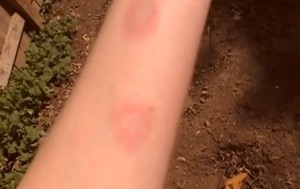
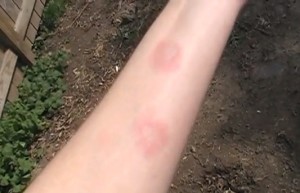
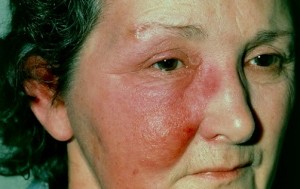
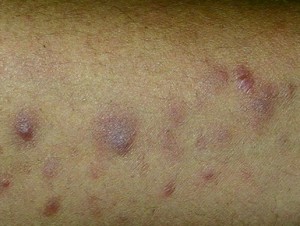
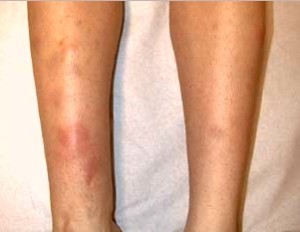
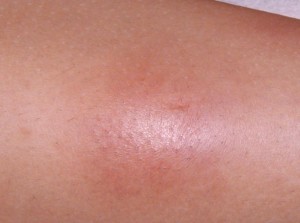
One of my sisters suffers sarcoidosis. I suspect this EN that I have been diagnosed with
is related to this. Our family is a part of a study of autoimmune diseases. I have been treated with prednisone, but still don’t have much relief. Also have these nodules up and down the outer sides of my upper legs, and have felt some knots in the trunk part of my body. Very tender but not visible yet as it is very visible and painful on the shins of both lower legs. Have had two rounds of prednisone but still am developing new and painful knots. I am a 78 year old woman.